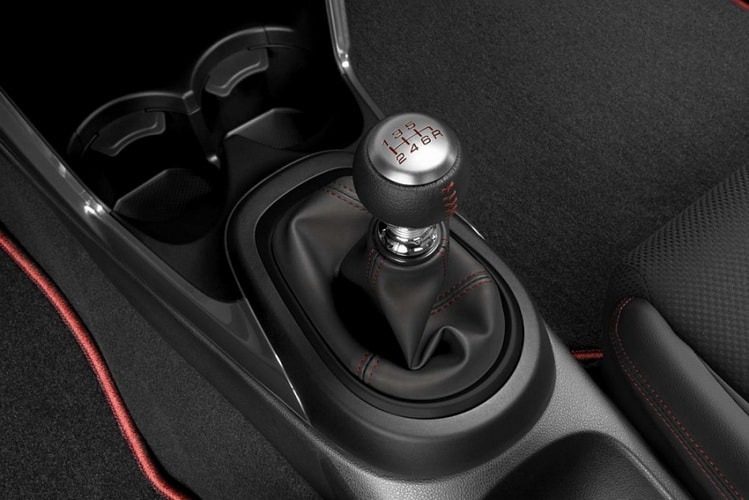
Do I need a break-in of a new car, how to do it correctly for internal combustion engines, automatic transmissions and manual transmissions
Content
When buying a new car, any owner, even a beginner, thinks about how to extend the smooth operation of the car and its components, push the repair as far as possible beyond the warranty period. Properly conducted running-in of the most important elements - the engine and transmission - can help in increasing the service life of the main components of transport.

What is a car break-in in simple words
Running in a new vehicle is a process during which the correct grinding of all the main units, assemblies and parts takes place.

Most car manufacturers carry out the so-called "cold" break-in before installation on the car, but this procedure is carried out in sparing modes, which are rarely achievable in a real situation.
Run in a car or not, all the pros and cons
The running-in of the machine is carried out in a sparing mode, which in no way can worsen the condition of components and parts. The break-in is mainly opposed by representatives of manufacturers, stating that modern cars do not require any restrictions in operation from the first kilometers, and all the necessary procedures were carried out at the factory (cold break-in).
Many manufacturers indicate some restrictions on the operation of a new car, a number of them recommend passing a zero MOT.
What gives a car break-in:
- soft smoothing of the roughness of parts without the possible formation of scuffs;
- lapping of moving parts of various systems;
- cleaning of oil channels and the entire internal combustion engine from possible chips or foreign components;
- grinding of brake discs and pads, which subsequently (after 200-250 km) will provide excellent braking;
- identification of existing defects or defects;
- adapting new tires and improving their grip on the surface.
The break-in period is measured in kilometers and is 1000-5000 km, depending on the manufacturer, and it is recommended to break in a diesel engine twice as much as a gasoline one.
Zero MOT, pros and cons, pass or not?

During the operation of a new car, moving parts are lapped, and chips can form in the engine, which enters the oil and oil filter. At zero maintenance, in addition to inter-interval oil changes, the levels of all working fluids are checked, if necessary, they are replaced or topped up. They also carry out a cursory inspection of the interior, body parts, electrics, the condition of the running and braking systems.
Such out-of-service inspection and maintenance is not mandatory, but in the presence of small defects, higher roughness compared to design calculations in the internal combustion engine units, such a procedure is quite justified.
Changing the oil after an internal combustion engine break-in can extend the life of the engine, as chips (if any) will be removed from the engine lubrication system, which will reduce the likelihood of scoring and further destruction of components.
How to properly prepare for the break-in of a new car

A new car requires particularly careful control of individual elements, since if a possible marriage is not detected in time, the consequences will not be very pleasant.
Before the start of the break-in, as well as daily during its passage, you should:
- check the oil level in the internal combustion engine, the level of the working fluid should be in the middle between the marks;
- check the level of brake and coolant;
- fill the car with high-quality fuel;
- inspect the engine compartment and the bottom, as well as the surface under it for smudges.
How to properly break in an engine
One of the main elements of the car is the engine, which requires especially careful running-in, which is the key to good long-term operation even beyond the warranty limit, excellent dynamics, low fuel consumption and other parameters.
The most harmful for the motor are heavy loads, which involve driving in high gear at low speed and strongly depressing the gas pedal (for example, driving in 5th gear at a speed not exceeding 70 km / h; driving uphill at low speeds (less than 2000), especially with extra weight.
Basic recommendations for running in internal combustion engines:
- do not try to achieve maximum speed performance;
- avoid prolonged driving at the same speed or speed;
- it is not advisable to squeeze the accelerator pedal all the way;
- recommended rpm during break-in is in the range of 2500-4000 km (depending on engine type), but it is recommended not to exceed 3000-3500 in the first half of break-in;
- avoid prolonged idling;
- eliminate engine braking;
- avoid dynamic acceleration, sudden braking and jerking while driving;
- avoid driving at low speeds;
- do not load the car, do not use a trailer and do not put a lot of passengers;
- check the oil level daily, it is worth checking it 3-5 minutes after the transport stops on a flat surface, you should carry a little oil with you for topping up;
- if possible, avoid driving on surfaces with poor grip (dirt, sand, ice or a lot of snow) to avoid overloading the internal combustion engine during running.
Transmission run-in steps
The transmission is the second most important unit in a car. Its device is very complex, it has a lot of moving and rubbing elements, so you should be scrupulous about running the box.


Watch this video on YouTube
Careful running-in of the transmission will extend its trouble-free service life and push back expensive repairs for a decent period.
Automatic transmission
An automatic transmission is an extremely complex mechanism that requires careful handling and careful running. It is better to wait a bit, drive competently, than to fork out later on expensive repairs, which, of course, will happen after the end of the warranty.


Recommendation for running in automatic gearbox:
- before driving, the automatic transmission should be warmed up to operating temperature to achieve the desired consistency of the transmission fluid, in winter it can take up to 10 minutes;
- it is strictly forbidden to use the kickdown mode;
- observe that the neutral mode does not turn on when driving, which may occur due to a decrease in the pressure of the transmission fluid when it is heated, causing pressure on the planetary assembly;
- avoid wheel slip;
- it is strongly recommended to run in an automatic transmission outside the city, in order to avoid a jerky driving mode;
- avoid carrying heavy objects or large numbers of passengers;
- in every possible way to avoid overheating of the automatic transmission during the first 500 kilometers due to the fact that the upper layers of the friction discs, the hydraulic transformer and other parts of the planetary assembly are being run in;
- if the automatic transmission is serviced, i.e. provides for the replacement of the transmission fluid, it will not be superfluous to replace the working fluid to remove possible chips or other foreign components from it.
MKPP
A mechanical box is considered more unpretentious in operation and has a long resource. But even it is recommended to run in carefully for the first few thousand kilometers.


Tips for proper break-in of a manual transmission:
- it is necessary to start moving and pick up speed smoothly, changing steps in a timely manner;
- it is necessary to turn on the speeds in the manual transmission smoothly with the clutch pedal fully depressed, avoiding sudden movements or applying significant efforts;
- during the first thousand kilometers, it is recommended not to move at a speed of more than 80-90 km / h and in higher gears (4,5,6);
- it is necessary to change the steps one by one and in a timely manner; when running in, it is categorically not recommended to jump over speeds (for example, from 4th to 2nd, from 3rd to 5th);
- during break-in, it is necessary to use a smooth driving mode, if possible, avoid long climbs or travel on roads with poor coverage;
- after the end of the running-in of the mechanical transmission, it will not be superfluous to completely replace the working fluid in it to remove metal chips or other foreign substances that could have formed during the lapping of the manual transmission units.
A new car requires careful handling and proper maintenance, especially during the first thousand kilometers, during which various parts and assemblies are lapped.
The break-in procedure is simple, but its proper implementation will extend the life of the main components and help avoid numerous breakdowns. The basic principles of break-in are daily monitoring of working fluids and avoiding stress on the internal combustion engine and transmission, for which you should follow the simple recommendations described above.

